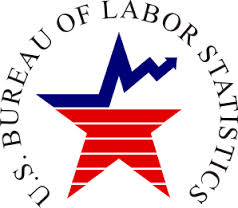Washington, DC…Nonfarm payroll employment rose by 235,000 in February, and the unemployment rate changed little at 4.7 percent. Job gains occurred in construction, private educational services, manufacturing, health care, and mining. Incorporating revisions for December and January, which increased nonfarm payroll employment by 9,000 on net, monthly job gains have averaged 209,000 over the past 3 months.

In the goods-producing sector, construction employment rose
by 58,000 in February, after increasing by 40,000 a month
earlier. Job growth continued among residential specialty trade
contractors in February (+15,000). Employment among
nonresidential specialty trade contractors grew by 22,000, after
changing little in recent months. Job gains also occurred in
heavy and civil engineering construction over the month
(+15,000).
Employment in manufacturing increased by 28,000 in
February. Employment rose in food manufacturing (+9,000) and in
machinery (+7,000), while transportation equipment lost 6,000
jobs. Manufacturing has added 57,000 jobs since November.
Mining added 8,000 jobs in February, led by a gain in
support activities for mining (+6,000). Mining employment has
increased by 20,000 since a recent low in October 2016.
In the service-providing sector, private educational
services added 29,000 jobs in February, following little
employment change in January (-5,000). This industry has added
105,000 jobs over the year.
Health care employment rose by 27,000 in February, with
most of the gain in ambulatory health care services (+18,000).
Health care has added 357,000 jobs over the past 12 months.
Employment continued to trend up in professional and
business services in February (+37,000) and has increased by
597,000 over the year.
Retail trade employment edged down in February (-26,000),
following an increase of 40,000 in the prior month.
Average hourly earnings of all employees on private nonfarm
payrolls rose by 6 cents in February, following a gain of 5
cents in January. Over the past 12 months, average hourly
earnings have risen by 2.8 percent. From January 2016 to January
2017, the Consumer Price Index for All Urban Consumers (CPI-U)
increased by 2.5 percent (on a seasonally adjusted basis).
Turning to measures from the survey of households, the
major labor market indicators were about unchanged over the
month. Both the unemployment rate, at 4.7 percent, and the
number of unemployed people, at 7.5 million, remained little
changed in February. There was also little movement in the
number of unemployed people who had been looking for work for 27
weeks or more. In February, there were 1.8 million such
individuals, who accounted for 23.8 percent of the unemployed.
Both the labor force participation rate, at 63.0 percent,
and the employment-population ratio, at 60.0 percent, showed
little change in February.
Among the employed, 5.7 million worked part time for
economic reasons in February, little different from January.
(These involuntary part-time workers would prefer to work full
time but had their hours cut back or were unable to find full-
time jobs.)
Among those neither working nor looking for work in
February, 1.7 million were marginally attached to the labor
force, about the same as a year earlier. Discouraged workers, a
subset of the marginally attached who believed that no jobs were
available for them, numbered 522,000 in February, also little
changed from a year earlier. (People who are marginally attached
to the labor force had not looked for work in the 4 weeks prior
to the survey but wanted a job, were available for work, and had
looked for a job within the last 12 months.)
In summary, nonfarm payroll employment rose by 235,000 in
February, and the unemployment rate was little changed at 4.7
percent.


